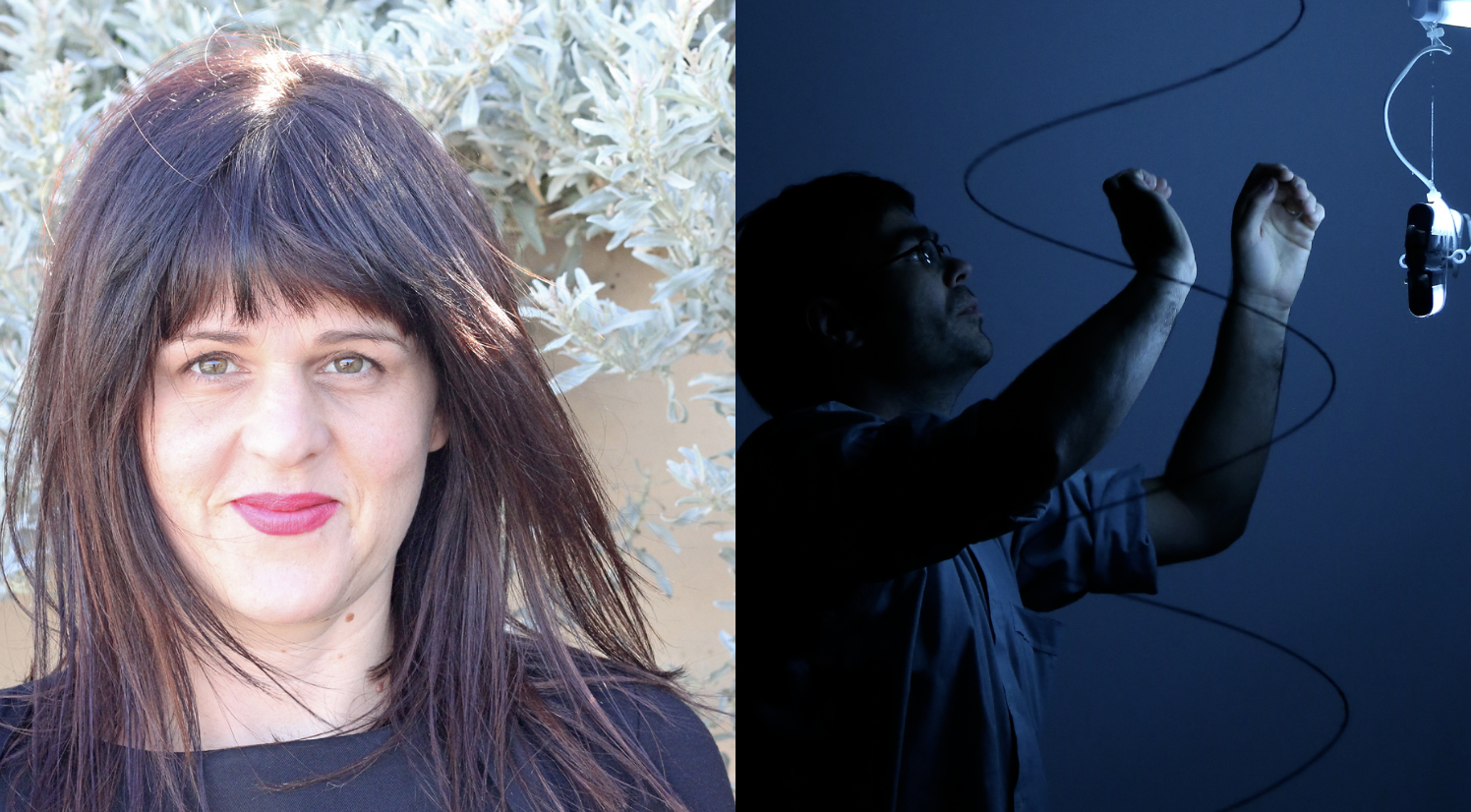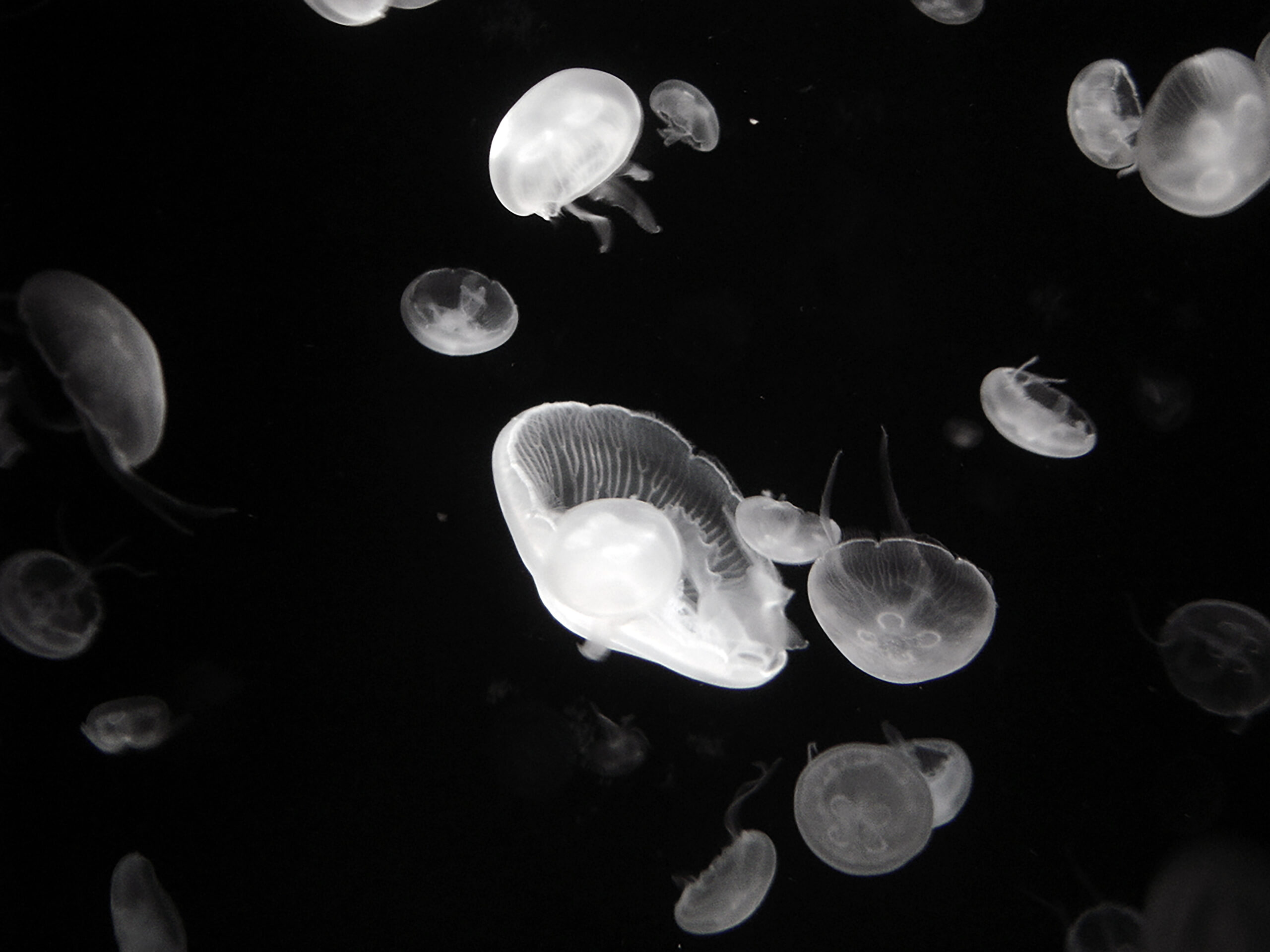ANAT Synapse Residencies
When art collides with science and technology, magic happens. This cross-disciplinary, creative collision is at the heart of everything ANAT does, most notably in our flagship residency program, ANAT Synapse.
ANAT Synapse is a residency program that involves Australian research organisations hosting artists in residence to undertake a period of creative research and practice. The program brings artists and researchers together in partnerships that generate new knowledge, ideas and processes beneficial beyond both fields.
Since its genesis in 2004, ANAT Synapse has enabled research collaborations between more than 100 artists and scientists. We have facilitated crossovers between numerous artistic and scientific disciplines over the years–between sound design and ecology, new media and data science, poetry and astrophysics, and many, many others. All genres of practice and fields of study are welcome.

Left Alicia Sometimes. Right Ross Manning, Spiral Sequence, 2013. Photograph Alex Cuff.
2023 ANAT Synapse Residents
1. ALICIA SOMETIMES + PROFESSOR TAMARA DAVIS,
THE UNIVERSITY OF QUEENSLAND (UQ)
Astro-Poetic Compositions is a collaboration between prominent astrophysicist Professor Tamara Davis (AM) and artist Alicia Sometimes exploring distance, mapping, composition and the measurement of the universe through the practices of language and symbolism. This collaboration sought to comprehend how language both constructs and impedes scientific knowledge.
As part of the ANAT Synapse program, residents create online creative research journals, these serve as unique live documents of the residency and as a cultural artefact.
Alicia's CREATIVE RESEARCH JOURNAL
Alicia Sometimes is an Australian poet, multi-media artist and broadcaster. She has performed her spoken word at many venues, festivals and events around the world. Her poems have been in Best Australian Science Writing, Best Australian Poems and more. She is director/co-writer of the art/science planetarium shows, Elemental and Particle/Wave.
Professor Tamara Davis is an astrophysicist and ARC Laureate Fellow at The University of Queensland with over two decades experience studying supernovae, black holes, and dark energy. She is currently leading the Australian Dark Energy Survey (OzDES), and will be the Deputy Director of the upcoming ARC Centre of Excellence for Gravitational Wave Discovery. She is an avid communicator of science and now a regular guest host of ABC TV’s “Catalyst” science show, including the episode “Black Hole Hunters” which won the American Institute of Physics Science Communication Award.

Alicia Sometimes, Dark Energy, image courtesy the artist.
2. ROSS MANNING + DISTINGUISHED PROFESSOR LIDIA MORAWSKA & DR ANNA TWEEDDALE,
QUEENSLAND UNIVERSITY OF TECHNOLOGY (QUT)
Aerosol will creatively explore how art might provoke new thinking about living in, and interacting with, buildings and their indoor atmospheres. Informed by state-of-the-art science and technologies for monitoring air quality, as well as ventilating/filtrating indoor environment, Aerosol will produce DIY experiments in kinetic, immersive, and interactive art.
As part of the ANAT Synapse program, residents create online creative research journals, these serve as unique live documents of the residency and as a cultural artefact.
ROSS' CREATIVE RESEARCH JOURNAL
Ross Manning’s work facilitates interactions of light, physics, and sound. Repurposing technologies Manning creates dynamic sculptures and atmospheric installations. Stemming from Manning’s experimental music background, he employs a distinct audio-visual language that uses rhythm and repetition to connect sound, light, colour, and movement.
Dr Anna Tweeddale, investigator at HBI, is a registered architect and researcher with extensive experience in practice-led research and collaborating with artists across many disciplines (photography, dance/choreography, experimental music, illustration/printmaking, installation, and visual arts). Her collaboratively creative works have been exhibited nationally and internationally, including at the Venice Architecture Biennale, and she was a recipient of the BCC Lord Mayors Young and Emerging Arts Fellowship. Dr Tweeddale has also written extensively on art and architecture and given lectures and talks on art, architecture, and urban culture
Lidia Morawska is a Distinguished Professor in the School of Earth and Atmospheric Sciences, at the Queensland University of Technology (QUT) in Brisbane, Australia; the Director of the International Laboratory for Air Quality and Health (ILAQH) at QUT, a World Health Organization (WHO) Collaborating Centre on Air Quality and Health; a Co-Director in Australia for the Australia – China Centre for Air Quality Science and Management (ACC- AQSM); an Adjunct Professor at the Institute for Environmental and Climate Research (ECI), at the Jinan University, Guangzhou, China; and a Vice- Chancellor Fellow, Global Centre for Clean Air Research (GCARE), University of Surrey, United Kingdom.

Ross Manning, Hyperbola (detail) 2019. Kyoto Arts Center, Japan. With the assistance from the Australia Council for the Arts International Residency Program. Photograph SongGi.
2023 ANAT Micro Talk
On Thursday 2nd October we held a short, lunchtime conversation that featured the artists and researchers undertaking the 2023 ANAT Synapse Residency and ANAT Bespoke Residency programs:
Alicia Sometimes (Vic) + Prof Tamara Davis (Qld) The University of Queensland
Ross Manning (Qld) + Distinguished Prof Lidia Morawska (Qld)
& Dr Anna Tweeddale (Qld) Queensland University of Technology
Dr Peter Morse (Tas) + Prof Christopher Fluke (Vic) Swinburne University
For over thirty five years, from its home base, Tarndanya on Kaurna Country (Adelaide, South Australia), Australian Network for Art and Technology (ANAT) continues to be the national leader in the field of experimental arts and cross-disciplinary practice with science and technology partners. The not-for-profit organisation operates on a continuum with varying entry points, including residencies, workshops and triennial events. Engaging artists at every level of their creative research practice, sci-tech-art curious audiences and science and technology partners like universities and research facilities, ANAT believes in the essential role artists play across all areas of society.
ANAT is assisted by the Australian Government through the Australia Council for the Arts, the South Australian Government through Arts SA and through the Visual Arts and Craft Strategy, an initiative of Federal and State Governments.
ANAT Synapse Residencies 2022 | 2021 | 2020 | 2019 | 2018 | 2017 | 2016 | OLDER